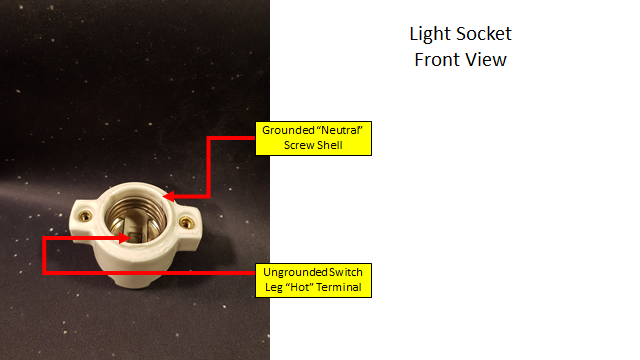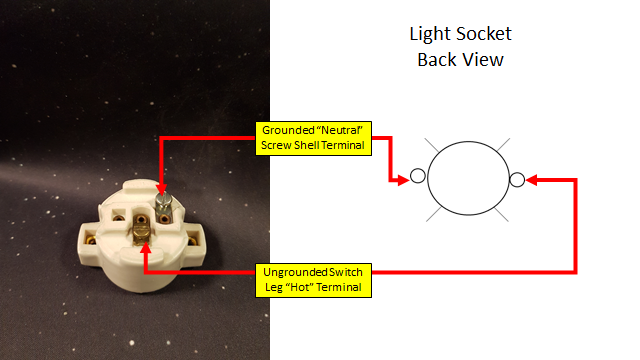25 Edison Screw Base Connections
Aaron Lee
The standard Edison screw base was developed by Thomas Edison in the 1880s and has become the industry standard for connecting electrical lamp loads.
Modern AC electrical systems utilize two basic types of conductors to energize a lamp load.

A “hot” ungrounded conductor is connected to an overcurrent device at the source of supply and provides the energy to the circuit. Usually a black or red wire, but any colour other than white or green could be used. This wire is connected to the brass-coloured terminal screw.
A “neutral” grounded conductor is the return path for current to flow from the load back to the source. This wire is usually white, or identified in some other means and is connected to the silver-plated “identified” terminal screw.

The identified grounded conductor (white or grey) is to be connected to the screw shell and the “hot” or ungrounded conductor is to be connected to the center terminal of the lamp base. The screws used to physically connect the circuit wires should be colour-coded to signify that one of them is the identified terminal to which the grounded conductor is to be connected. It is important to correctly connect the wires to their appropriate terminal screws because while a reversal of the wires would not necessarily prevent the lamp from working, it would mean that the large screw shell would be energized to 120 volts and present a shock hazard to anyone changing a lightbulb.
